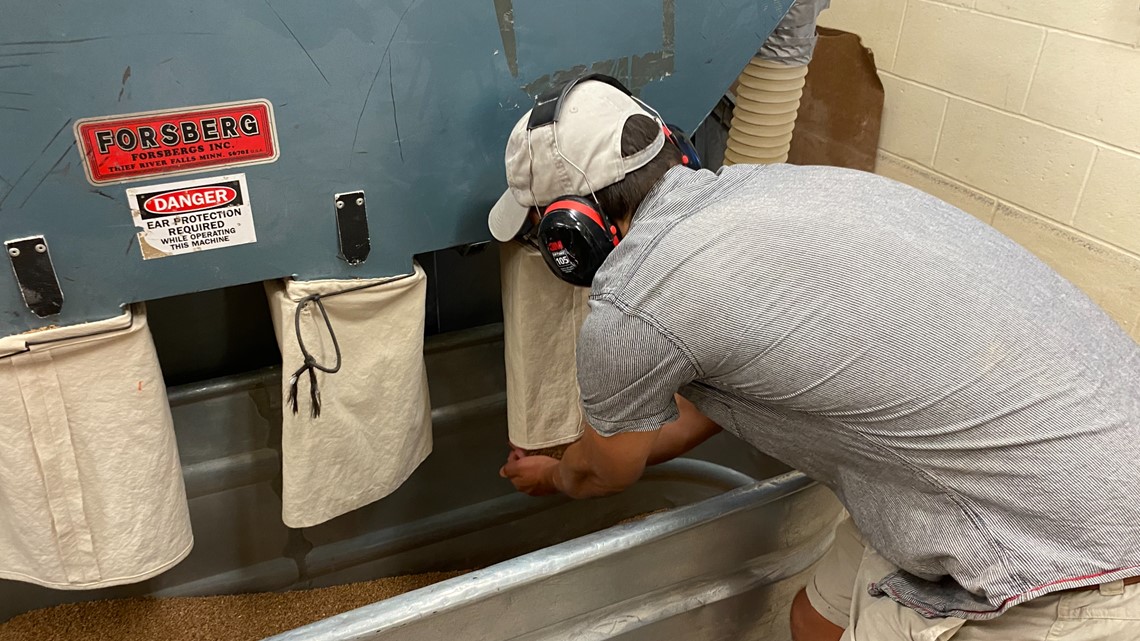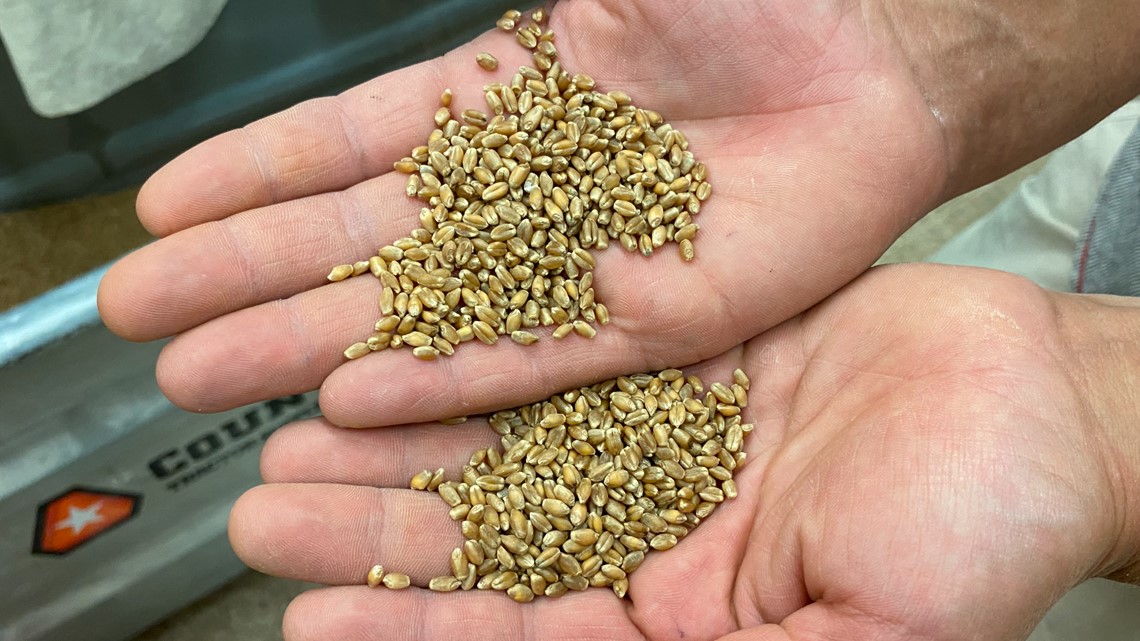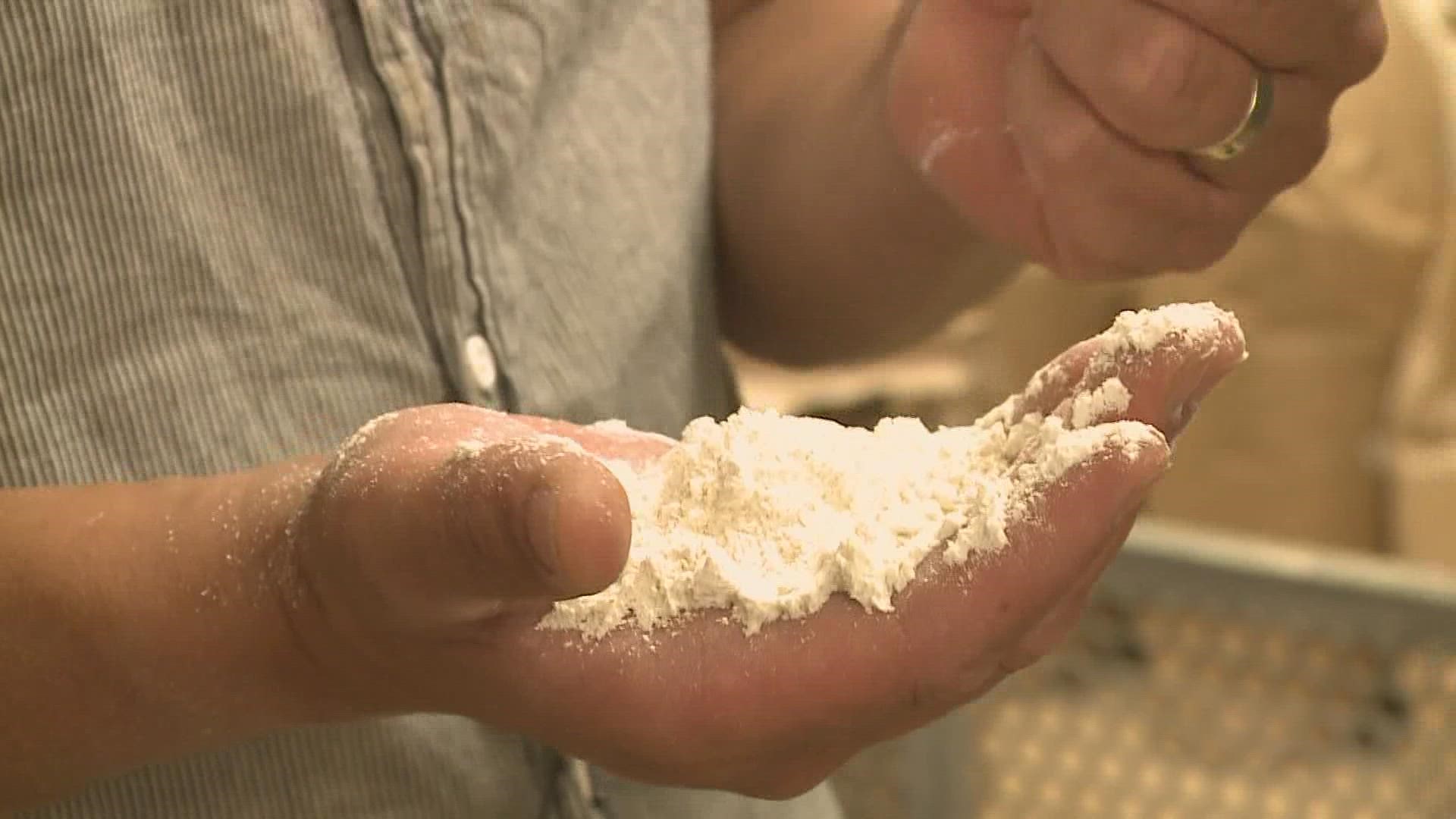SKOWHEGAN, Maine — Excuse the rhyme—it's hard to use “Maine” and “grain” in a sentence and avoid the temptation... or the inevitable pattern of the old song from the Broadway musical, “My Fair Lady."
But the fact is, we may be hearing more about grain in Maine, because the farming and use of the crop has seen a steady increase in recent years.
It's evident at Maine Grains in Skowhegan, a milling and retail business created in the former county jail building.
Inside, two stone-grinding mills turn out thousands of pounds of flour each day, nearly all of it produced from Maine-grown wheat. The mill is so busy it runs two shifts each workday, and that includes people packing and shipping flour to both commercial and residential customers.
“We have two mills in operation now, and are in the process of having another delivered,” Adam Rosario, the production manager for Maine Grains, said.
The 5-year-old business already has plans to construct a second building next door to handle the increasing demand, Rosario says.


What’s happening?
Rosario and Amber Lambke, who founded Maine Grains, say it's partly because more and more people, from pro chefs to home bakers, care about local food and want to have more control over where their food comes from.
“So we really have bakers, brewers, and chefs all interested in local grains as staple in our food,” Lambke said.
The brewers have also played a significant role in the growth of Maine’s grain economy.
“In 2009, there were 30 craft breweries. Today, we have 170,” Tristan Noyes, executive director of the Maine Grain Alliance, an industry promotion group, said.
“One of the great things is most of these breweries have committed to using local grain.”
They say that has also led to an increase in the amount of farmland growing grain, especially wheat, oats, and barley.
Noyes, who grew up on a potato farm, says those farms have used grains such as oats as a rotation crop for years, but the crop would be sold for livestock feed or sometimes on the commodity market.


Now that Maine breweries want higher grades or large quantities of grains, and the market for stone ground wheat flours has grown, more farmers are interested in grain as a primary crop, and acreage has increased.
“We have two, larger-scale incredible mills sourcing thousands of acres of grain from all over the state,” Rosario said, “Largely Aroostook but other places, too, and [are] producing super high-quality flour.”
Lambke says grain is becoming a significant agricultural sector in Maine, and the value added, whether from bread or beer, stretches through the state’s economy.

